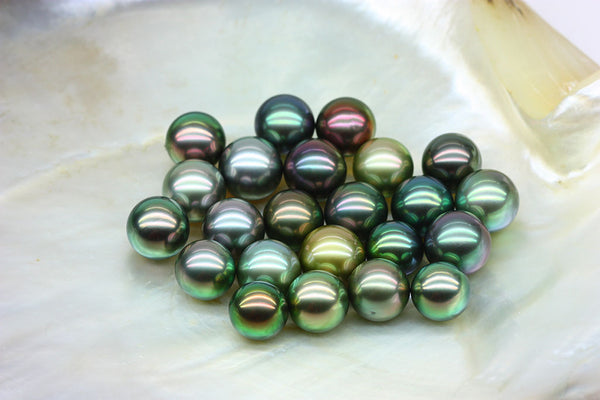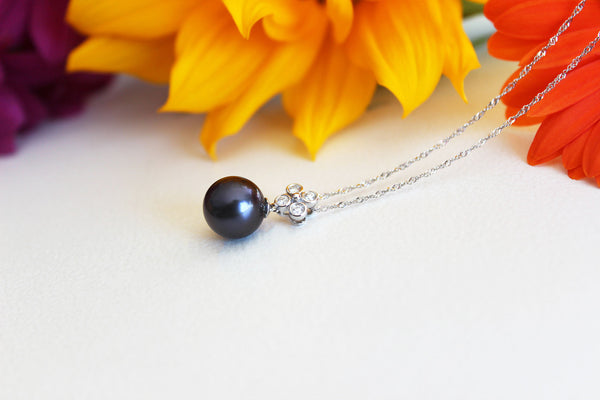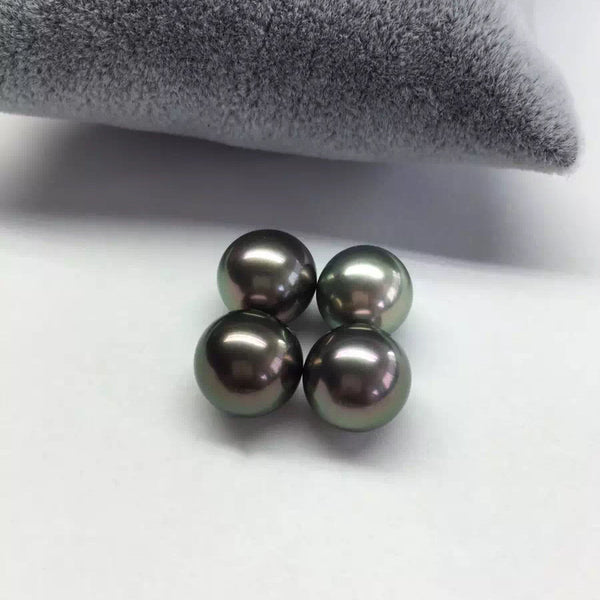Tahitian Pearls

What Are Tahitian Pearls?
Tahitian pearls are probably the most exotic and exciting type among all pearls. They're bead-nucleated saltwater variety grown in the black-lipped oyster called Pinctada margaritifera cumingii, and are native to French Polynesia. Despite their name, Tahitian pearls are not actually from Tahiti. Tahiti, a centre of commerce in French Polynesia, serves as the key trading point for these beautiful gems. Most Tahitian cultured pearls are cultivated in the lagoons of the Tuamotu Archipelago and Gambier Islands.
Pearls grown in P. margaritifera can also be found in the Sea of Cortez and the Cook Islands. However, the name “Tahitian Pearls” is only reserved for those produced by the black-lipped oysters in French Polynesia.

How Are They Cultured?
The cultivation process starts from gathering and nurturing baby oysters into adulthood. In the wild, tiny oyster embryos initially swim freely in the water. When they grow to 3 months old, they lose their ability to swim and attach themselves to fixed surfaces. At that stage, we call them spat. Pearl farmers place spat collectors below the lagoon surface for baby oysters to cling on. Spat are usually collected when they are about one or two inches in diameter. Then they are placed in mesh baskets or pouches suspending on lines below the water surface to grow. Farmers need to clean young oysters regularly to remove any marine growth on their shells.
When the oysters are about 2 to 3 years old and grow to 3.5 to 4 inches in diameter, they’re ready for nucleation. Not all adult oysters can be nucleated. Only the healthy ones with fully developed gonads are chosen.

The nucleation process is a precise procedure that requires skilful grafting. A round bead made out of freshwater mussel shells, is inserted in the oyster’s gonad, together with a mantle tissue piece from a healthy donor oyster. It takes about a month for the incision to heal.
During the pearl growth period of 16 to 24 months, famers constantly tend to the health of the oysters and monitor their environment such as salinity, water temperature and etc. It takes enormous effort between human and nature working hand in hand to produce a Tahitian pearl. Only up to 40% of successfully nucleated oysters can produce good quality gems. Among those, less than 20% are round. The majority of the harvest are circled or baroque-shaped. Less than 1 to 2% of these are round and of the finest quality.
Exotic Natural Colours
Tahitian pearls are renowned for their vibrant colours. Although they are often known as the “black pearls” since grey and black are the most common shades, the name is actually misleading. These gorgeous gems are not entirely black. In fact, they come in a wide array of natural colours, such as pistachio, aubergine, peacock, grey, brown, purple and many dark shades in between. Exotic colours along with overtone such as blue, purple and pink are highly sought after and therefore command high prices.

The lustre of fine Tahitian pearls is truly breathtaking. Their shine is so intense that it almost reaches a metallic sheen. However, not all of them exhibit beautiful shine. In fact, fascinating gems with extremely high lustre are only a tiny percentage of the entire annual harvest. Due to the over-production and pollution in certain areas, many have a low quality with holes, gaps, pits and poor lustre. These low quality pearls, unfortunately, will not last long.
At Pearl-Lang, we have a stringent selection process. Each gem is individually chosen at source for its fine quality and beauty. We’re proud that our Tahitian pearl pendant necklaces and earrings offer the finest quality in the world with the most beautiful natural colours and lustre. Whether you’re familiar with these stunning gems or new to them, they’re truly a wonder of nature you can cherish for generations.





